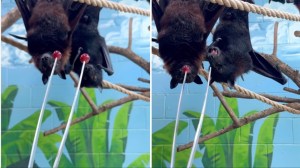In a soporific Ted Ed lesson written by science journalist Sheena Faherty and animated by Dabid Pascual and Davy Dumartheray, narrator Julianna Zarzycki explains the difference between sleeping and hibernating, the different types of hibernation employed by different animals and the mistaken belief that only certain animals hibernated. Also addressed is torpor, the reduced metabolism and respiration that make up hibernation and how this might be able to provide insight for human health.
So far, they’ve discovered that hibernation is controlled by genes that turn off and on in unique patterns throughout the year, fine-tuning the hibernator’s physiology and behavior… And the genes in question are present in all mammals, which means that researchers could study hibernating mammals to see how their unique control of physiology might help humans.






